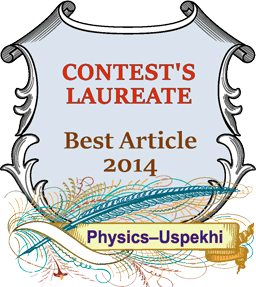 |
RSS feeds |
|
|||||
| Issue 4, 2024 |
|
||||||
|
|
|
||||||
Issues/2014/January |
← → |
| Reviews of topical problems |
Small scale clumps of dark matter
a Il Gran Sasso Science Institute (GSSI) and Laboratori Nazionali del Gran Sasso, INFN, Assergi, Italy
b Institute for Nuclear Research, Russian Academy of Sciences, prosp. 60-letiya Oktyabrya 7a, Moscow, 117312, Russian Federation

Small scale clumps of dark matter are gravitationally bounded structures that have masses comparable to or lower than stellar masses and consist of non- or weakly interacting dark matter particles. In this paper the current knowledge of how such structures form and evolve is reviewed, various types of spectra of primordial cosmological perturbations are considered, and various dark matter models are examined. Depending on the particular spectrum type, dark matter clumps may differ considerably in their formation processes and ultimate characteristics. The role of clumps in experiments on dark matter particles indirect detection via their annihilation products is discussed. A number of astrophysical problems and phenomena that are related to dark matter clumps are examined.
|
PACS: 14.80.Nb, 95.35.+d, 98.70.Rz ()
DOI: URL: https://ufn.ru/en/articles/2014/1/a/  000334343500001 000334343500001  2014PhyU...57....1B 2014PhyU...57....1B Citation: Berezinsky V S, Dokuchaev V I, Eroshenko Yu N "Small scale clumps of dark matter" Phys. Usp. 57 1–36 (2014)
Received: 6th, May 2013, accepted: 11th, June 2013 Оригинал: Березинский В С, Докучаев В И, Ерошенко Ю Н «Мелкомасштабные сгустки тёмной материи» УФН 184 3–42 (2014); |
|
© 1918–2024 Uspekhi Fizicheskikh Nauk Email: ufn@ufn.ru Editorial office contacts About the journal Terms and conditions |